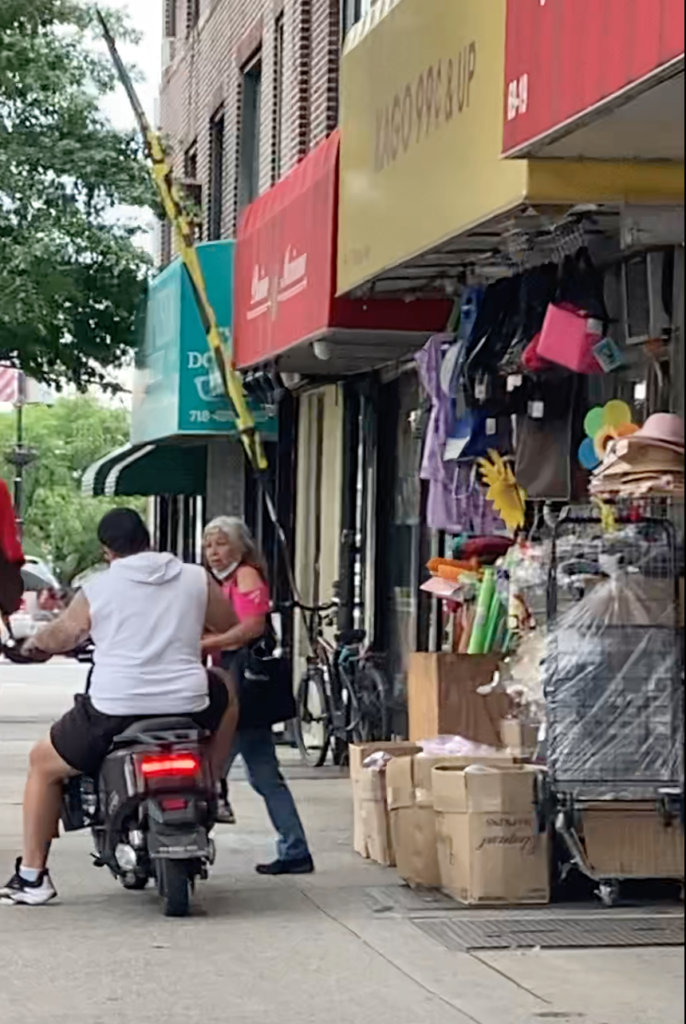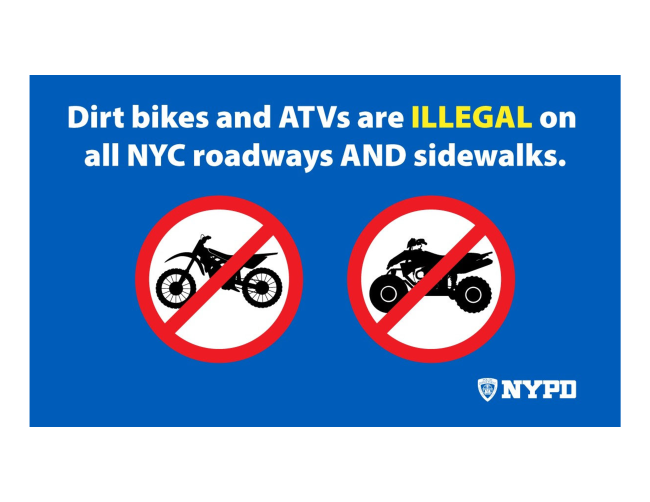The daily slog to work for New Yorkers, especially if you live in a transit desert or don’t want to be punched or shoved in front of a subway train, feels less a commute and more a white-knuckle dash through a lawless dystopia from a Mad Max movie.
Much of the mayhem stems from the scourge of two- or three-wheel-powered vehicles, riders of which disregard the traffic laws without penalty daily. How often do you see one go through a red light?
Pedestrians tell me they live in fear of these scofflaws on sidewalks, sneaking up because they are less audible and visible than cars.
Part of the problem is the confusion over which of these bikes must be registered, require a license, plate, VIN, or helmet. There are at least seven different classifications of e-scooters and mopeds, according to the city’s Department of Transportation.

This year is on pace to be the deadliest in terms of traffic deaths since the Vision Zero initiative began in 2014. An e-moped recently struck a child in a stroller in my district. Convoluted laws concerning these vehicles led the NYPD to initially let the rider go without penalty.
I clarified the rules with the precinct, and the scooting scofflaw was ticketed, and the scooter confiscated. How many incidents like this occur without someone to explain the law and push for enforcement?
Anti-car zealots adhere to a sort of Orwellian, inverted Animal Farm “two wheels good, four wheels bad” agenda and say that automobiles should be banned from city streets. Streets, they say, are for people. Some “advocates” go so far as to break the law by deflating the tires of four-wheeled vehicles, you know, so fewer people get hurt.
Yet automobiles are safer, more efficient, and more environmentally friendly than ever. Even cars with gasoline-powered engines have lower emissions and better fuel economy. Today’s cars have safety features barely dreamed of decades ago: cameras, air bags, radar, adaptive cruise control, vehicle stability assistance, emergency breaking and lane-departure warnings.
Regulations have helped these innovations become common or even mandatory. Many vehicles on our roads feature pedestrian crumple zones between the hood and the rigid engine, under European and Asian regulations. The Biden administration can have the US Department of Transportation require similar features.

By contrast, many powered bikes and scooters are neither registered nor inspected the way an automobile must be in New York, even those required to be. Why bother if there’s no penalty? They’re also not insured; if you’re hit by one and sustain injury or property damage, you may be out of luck.
Some argue that scooters and mopeds are economical, compared to cars. But are they? There are hidden costs of e-bike/e-scooter ownership, such as a helmet, a jacket, extra batteries and, if you plan to blow through red lights, a coffin.
Electric bikes and scooters don’t even have to be on the road to pose a deadly danger. The FDNY warns that their batteries have sparked several recent fires in the city, including a massive conflagration in The Bronx. You can add the cost of property loss and injury in such a horrific fire to the cost of e-bike ownership.
Even with a helmet, which many riders skip, trauma sustained while riding these vehicles is severe and injury cases increasingly flood emergency rooms across the country. Riders aren’t surrounded by a metal body, crumple zones or air bags. A young woman riding on a powered scooter without a helmet in my district was thrown across the street and killed.

Nor can protected bike lanes protect everyone, everywhere.
The solution is legislation requiring that all two- or three-wheel-powered vehicles be registered, plated, driven with a license, and insured. There is no equity if the rules of the road aren’t the same for every powered vehicle capable of causing serious harm.
We also need our NYPD to enforce traffic laws for all drivers. Motorists with fewer wheels shouldn’t be immune to red-light or speed cameras.
Reckless driving on any number of wheels must be penalized. This is the road to safer streets.




